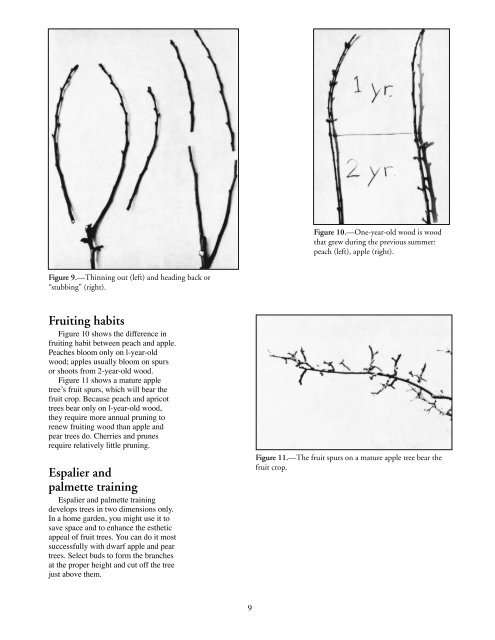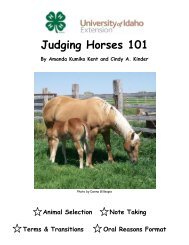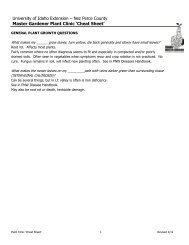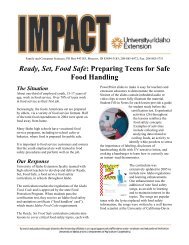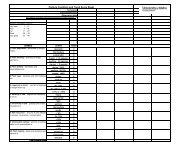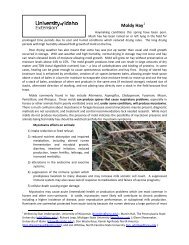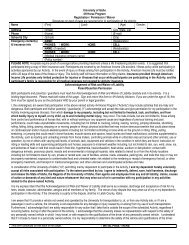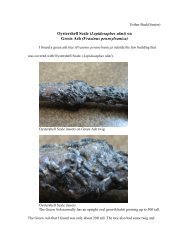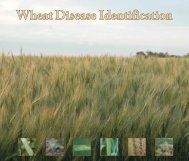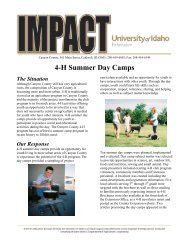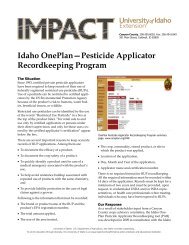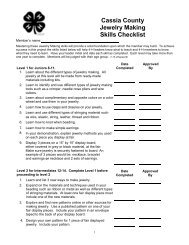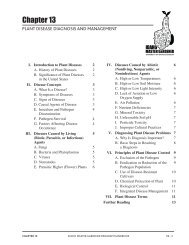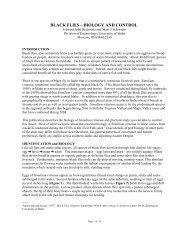Training and Pruning Your Home Orchard, PNW 400 (Oregon State ...
Training and Pruning Your Home Orchard, PNW 400 (Oregon State ...
Training and Pruning Your Home Orchard, PNW 400 (Oregon State ...
Create successful ePaper yourself
Turn your PDF publications into a flip-book with our unique Google optimized e-Paper software.
Figure 10.—One‐year‐old wood is wood<br />
that grew during the previous summer:<br />
peach (left), apple (right).<br />
Figure 9.—Thinning out (left) <strong>and</strong> heading back or<br />
“stubbing” (right).<br />
Fruiting habits<br />
Figure 10 shows the difference in<br />
fruiting habit between peach <strong>and</strong> apple.<br />
Peaches bloom only on l‐year‐old<br />
wood; apples usually bloom on spurs<br />
or shoots from 2‐year‐old wood.<br />
Figure 11 shows a mature apple<br />
tree’s fruit spurs, which will bear the<br />
fruit crop. Because peach <strong>and</strong> apricot<br />
trees bear only on l‐year‐old wood,<br />
they require more annual pruning to<br />
renew fruiting wood than apple <strong>and</strong><br />
pear trees do. Cherries <strong>and</strong> prunes<br />
require relatively little pruning.<br />
Espalier <strong>and</strong><br />
palmette training<br />
Espalier <strong>and</strong> palmette training<br />
develops trees in two dimensions only.<br />
In a home garden, you might use it to<br />
save space <strong>and</strong> to enhance the esthetic<br />
appeal of fruit trees. You can do it most<br />
successfully with dwarf apple <strong>and</strong> pear<br />
trees. Select buds to form the branches<br />
at the proper height <strong>and</strong> cut off the tree<br />
just above them.<br />
Figure 11.—The fruit spurs on a mature apple tree bear the<br />
fruit crop.


